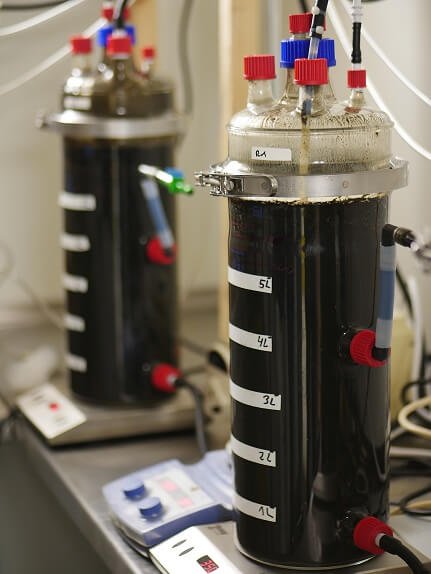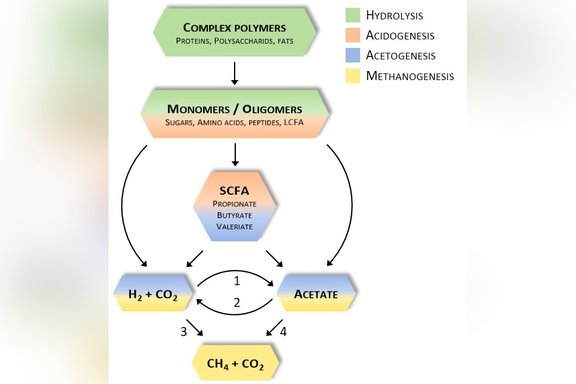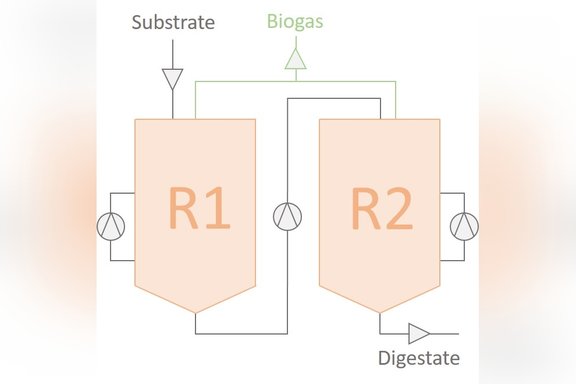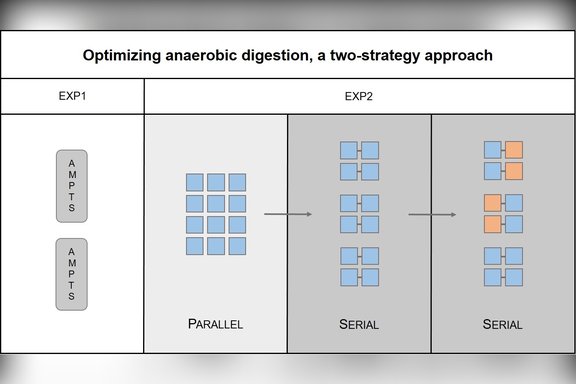Projekte
Optimizing anaerobic digestion, a two-strategy approach (2strategies4AD)


Anaerobic digestion (AD) for biogas production is attractive to complement other renewable energy sources. The process is independent of the climate and biogas can be utilized manifold: (i) to generate electricity and heat in a combined heat-and-power plant, (ii) feed the upgraded methane into the public gas grid, or (iii) use it as biofuel for vehicles. Biogas can be stored easily, which is a major advantage compared to other renewable energy sources. Furthermore, a wide variety of biodegradable wastes can be processed and disposal or incineration is avoided thereby. Typical substrates for biogas production are domestic organic wastes, byproducts from agriculture and industry, and sewage sludge.
Despite these advantages, biogas plant operators are under pressure due to volatile feed-in tariffs, inconsistent political backing and a tough competition for substrates. Thus, the basic optimization in plant operation and process control, to maintain reactor stability and increase gas yields, is a hot topic in research and is crucial for the future continuation of the biogas technology.
This project aims at contributing to the foundations of a next-generation AD system, exhausting the full potential for flexible energy production and using the existing infrastructure. This project will focus on two promising strategies. Converting the process from parallel to serial operation is one attempt to increase biogas production. In this cascade, the first reactor receives the doubled amount of fresh material and the second reactor pre-digested sludge material from the first one. This setup guarantees a higher substrate utilization and offers thereby increased methane yields and reduced amounts of digestate.
The addition of an easily degradable co-substrate will be the second attempt to improve the process efficiency. This is known as priming effect, and may be explained by an activation of involved microorganisms and generally increased growth rates. Using the priming effect shall help facilitating the consumption of hardly degradable substances. In other words, priming substances can be seen as sweets for microorganisms, render the staple palatable. Experiments will be set up in 6.5 L bioreactors. Researchers of the department of Waste and Resource Management at the University of Innsbruck will monitor classical process parameters, while researchers of the Department of Microbiology will investigate the involved microorganisms both taxonomically and functionally. The research consortium is complemented by scientists of the University of Magdeburg, Germany, who will analyze the proteome.
The results of this basic research project shall contribute towards a better understanding of the biomethanisation process and shall allow for a precise process control. The project helps thereby reaching the 20-20-20 goals of the European Union, which define the current EU-27 energy policy.
Human Resources
Heribert Insam, Anke Bockreis, Sebastian Hupfauf, Christian Ebner, Marco Wehner, Luis Miguel Rodríguez-Rojas
National Partners
Andreas Walter, Thomas Lichtmannegger, Michael Traugott
International Cooperations



